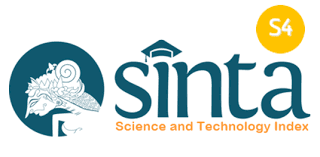Artikel (28)
This study aims to describe the scientific approach through the NHT model in improving students' higher-order thinking skills in buffer solution topics. The method was quasi-experiment with Pretest-Posttest Control Group Design. The population in this research was all students of class XI MIPA High ...
Jurnal Pendidikan dan Pembelajaran Kimia; Vol 8, No 3 (2019): Jurnal Pendidikan dan Pembelajaran Kimia; 538-551 | 2019
This research was aimed to describe the effectiveness of the Pre-Lecture Quiz in improving students' ability to fluency thinking skill on buffer solution topics. The method was quasi-experimental with a pretest-posttest non-equivalent control group design. The population of this research was all st...
Jurnal Pendidikan dan Pembelajaran Kimia; Vol 8, No 3 (2019): Jurnal Pendidikan dan Pembelajaran Kimia; 509-522 | 2019
The purpose of this study is to describe the effectiveness pollution by tofu liquid waste problem-based learning model to improve students’ communication skills. The method used was quasi experiment with the matching only pretest-posttest control group design. The Samples of this research were XI ...
Jurnal Pendidikan dan Pembelajaran Kimia; Vol 8, No 2 (2019): Jurnal Pendidikan dan Pembelajaran Kimia; 402-416 | 2019
This research aims to describe the effectiveness of e-book to increase motivation and students’ concepts mastery in the acid-base titration topic. The research method used is quasi-experimental with pretest-posttest control group design. The increasing motivation and students’ concept master...
Jurnal Pendidikan dan Pembelajaran Kimia; Vol 8, No 3 (2019): Jurnal Pendidikan dan Pembelajaran Kimia; 482-494 | 2019
This research was done to describe the effectiveness of e-book to improve students’ communication skills and concept mastery of acid-base titration. A quasi-experimental was used in this research which the design is a pretest-posttest control group design. The improvement of the students can be ...
Jurnal Pendidikan dan Pembelajaran Kimia; Vol 8, No 2 (2019): Jurnal Pendidikan dan Pembelajaran Kimia; 469-481 | 2019
Abstract: This research was describing the effectiveness of project based-learning on recycling of waste cooking oil in improving students' creative thinking skills. The method applied was a quasi-experimental with the matching only pretest-posttest control group design. The population were all stud...
Jurnal Pendidikan dan Pembelajaran Kimia; Vol 8, No 2 (2019): Jurnal Pendidikan dan Pembelajaran Kimia; 444-457 | 2019
The purpose of this study is to describe the effectiveness pollution by tofu liquid waste problem-based learning model to improve students’ critical thinking skills. The method used was quasi experiment with the matching only pretest-posttest control group design. The Samples of this research wer...
Jurnal Pendidikan dan Pembelajaran Kimia; Vol 8, No 2 (2019): Jurnal Pendidikan dan Pembelajaran Kimia; 387-401 | 2019
The research aims to describe the influence of the SiMaYang learning model in improving students' creative attitudes to electrolyte and non-electrolyte solution materials. The method of this research is quasi-experimental with pretest posttest control group design. The population in this study were ...
Jurnal Pendidikan dan Pembelajaran Kimia; Vol 8, No 2 (2019): Jurnal Pendidikan dan Pembelajaran Kimia; 320-333 | 2019
The research was aimed to describe the effect of socioscientific issue in improving students’ creative attitudes ability on electrolyte and nonelectrolyte solutions . The populations of this research were all students of X MIA at SMA Bandar Lampung. This research used quasi experiment with P...
Jurnal Pendidikan dan Pembelajaran Kimia; Vol 8, No 2 (2019): Jurnal Pendidikan dan Pembelajaran Kimia; 283-294 | 2019
This study aims to describe the PLGI model in improving students' high order thinking skills in hydrolyzing salt topics. This research used a quasi-experiment with pretest-posttest control group design; furthermore, a purposive sampling technique was used to determine the samples, thus XI MIPA 1�...
Jurnal Pendidikan dan Pembelajaran Kimia; Vol 8, No 2 (2019): Jurnal Pendidikan dan Pembelajaran Kimia; 226-239 | 2019


